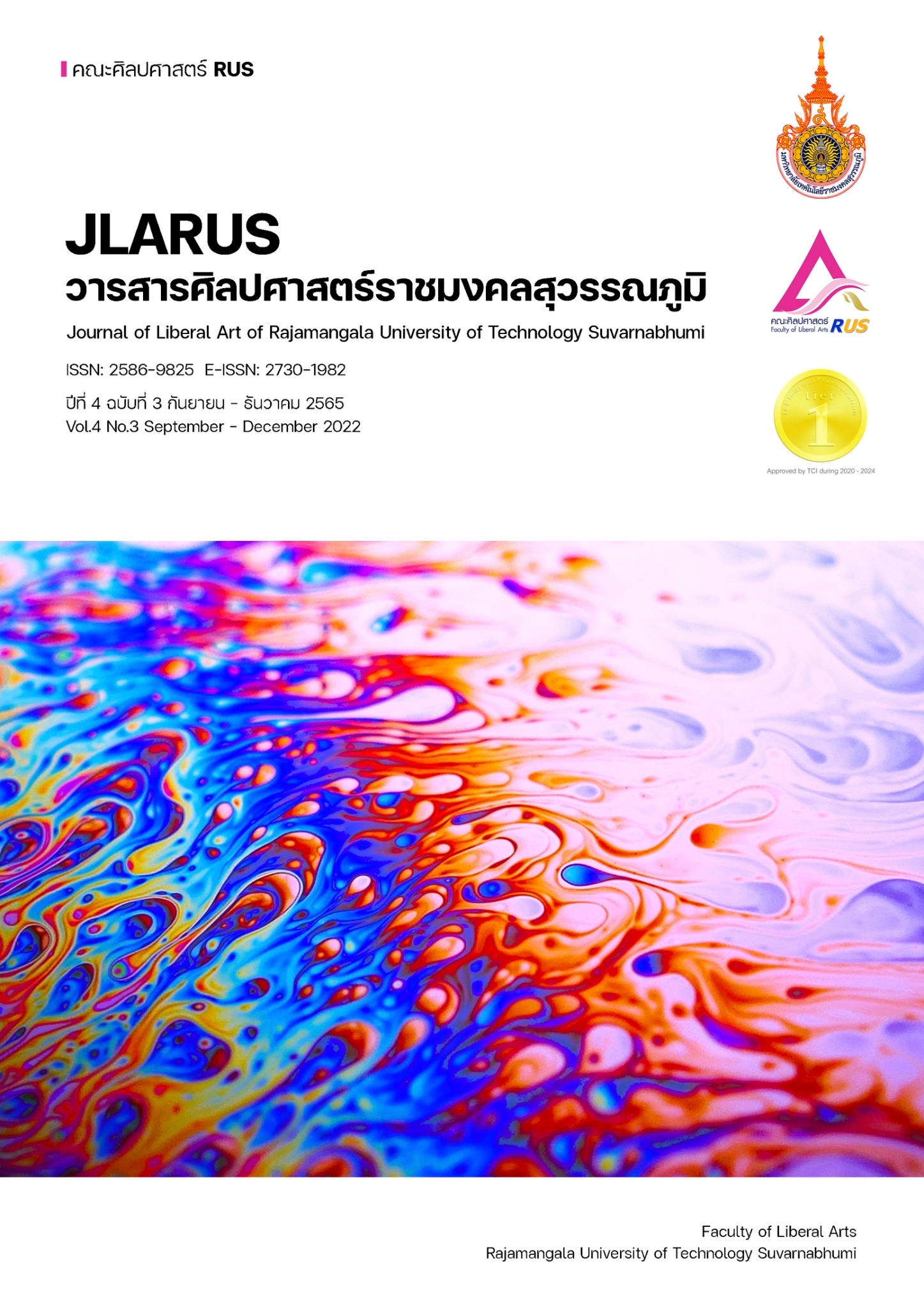THE STUDY OF STRUGGLES OF CHINESE PHONETICS ALPHABET OF STUDENTS AT RAJAMANGALA UNIVERSITY OF TECHNOLOGY SUVARNABHUMI, USING QUALITY CONTROL TOOLS
Main Article Content
Abstract
This article aimed to study Chinese phonetic alphabet pronunciation problems of students at Rajamangala University of Technology Suvarnabhumi – Hantra Campus. This qualitative research was carried out in order to develop their Chinese pronunciation to be clearer and more appropriate. The quality control tools used in this study included check sheets, Pareto diagram, and cause and-effect diagrams. The research results identified problems and causes of Chinese phonetic alphabet pronunciation problem of students at Rajamangala University of Technology Suvarnabhumi. The findings concluded that the main causes were the unfamiliarity with Chinese sounds and pronunciation which did not exist in Thai language, the lack of confidence in pronouncing Chinese words, the confusion between Chinese and English pronunciation, and the lack of vocabulary knowledge. Therefore, implementing activities and creating atmosphere both inside and outside classroom were essential for encouraging students to routinely review and practice Chinese phonetic alphabet pronunciation so that they would be more familiar and confident in pronouncing words. Moreover, there should be a classroom for students to drill and practice Chinese phonetic alphabet pronunciation by themselves. This would improve their skills and expertise in Chinese language sustainably.
Article Details

This work is licensed under a Creative Commons Attribution-NonCommercial-NoDerivatives 4.0 International License.
References
Aphichit S., Aekkarat S., Samruai S. and Thanitsak P. (2021). Quality Control and Loss Reduction in the Front Side Fender Model Assembly Process Using Poka-Yoke Techniques. RMUTP Research Journal, 15(2), 103-117.
Benja-arpa P. (2016). A Problem of Pronouncing Chinese Phonetic Alphabets of Kanchanaburi Rajabhat University Students. Kanchanaburi Rajabhat University. Academic Journal, 5(1), 82-90.
Chinese Studies Center, Institute of Asian Studies Chulalongkorn University. (2008). Chinese Language Teaching-learning Management in Thailand : Tertiary Level (Research report). Bangkok: Chulalongkorn University.
Kamkoon R .(2019). Development of Chinese phonetic alphabet pronunciation by Using Computer Assisted Instruction “Pronounce Chinese phonetic alphabet without Pinyin” of Mathayomsuksa 4.2 Students, Samakee Witayakom School ,Chiangrai Province. Master thesis, Master of Education, Mae Fah Luang University.
Luo Han. (2017). The Development of Online Instruction on Pronunciation Chinese Pinyin for Matayom 1 Students, Assumption College Sriracha (Master thesis, Master of Education). Chon Buri : Burapha University.
Tunyanusorn S. and Qi X. (2017). Error Analysis in Chinese Pronunciation of Business Chinese Students, International College, Chiang Mai Rajabhat University. Journalof Graduate Research, 8(1), 115-124.
Mongkol K. (2018). Application of Analytic Hierarchy Process to Select Quality Improvement for Defect Reduction Projects: A Case Study of Air Tank Manufacturer. Journal of Engineering RMUTT, 16(2), 71-83.
Saowanee D. and Supa P. (2017). Problems and Thai Teaching Activities to Chinese Students. Payap University Journal, 27(2), 31-39.
黄伯荣, 廖序东主编. (2007). 现代汉语. 上册,北京:高等教育出版社.
吕必松.(2005). 语言教育与对外汉语教学. 北京:外语教学与研究出版社.


